
7 Easy Scientific Method Experiments
Kids’ natural curiosity never fails to amaze me. Their imaginations and observation skills run wild, especially at the elementary level. And the classroom is the perfect place to explore and exercise their curious minds!
When it comes to introducing younger students to scientific concepts like drawing observations and conclusions, the scientific method is a great place to start. It doesn’t have to be anything crazy. I’ve seen some pretty intense resources that teach the scientific method for kids, and they’ve been anything but kid friendly!
My preferred way to teach science is to boil the scientific method down to these 5 steps:
- Asking a research question
- Making a hypothesis
- Doing the experiment
- Taking observations
- Writing a conclusion
Keeping the scientific method for kids simple lets them explore their world without confusing them too much. When it comes to science concepts, we want to ease younger students in — not overwhelm them. This helps kids build a love of science that will last their whole lives!
With all that being said, I’ve gathered my favorite easy scientific method experiments for younger students into one bundle for you! These 7 Easy Science Experiments to Teach the Scientific Method are amazing because they all follow the same framework. This helps students know what to expect when it’s time to experiment and keeps your curriculum cohesive. Once we do one or two, my class gets into a nice groove and doesn’t need much direction on my part.
Plus, each of these experiments are available in a digital format, so they’re perfect for in-person or distance learning! And since they are so easy for students to follow, students will have no problem completing them at home.
What are the 7 easy scientific method experiments?
I’m glad you asked! Here is everything that is included in the scientific method for kids bundle:
1. Rainbow Milk Experiment
In the Rainbow Milk Magic Experiment, students will combine milk, dish soap, and food coloring to learn all about why the colors begin to swirl and look as if they are exploding into a rainbow. This is such a simple science experiment that works great with students of any age!
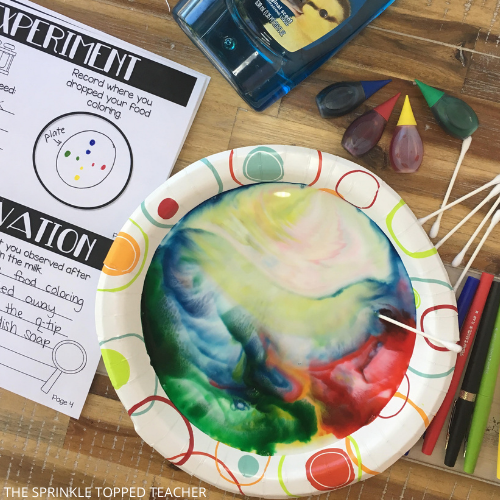
2. Tornado in a Bottle Experiment
This Tornado in a Bottle Experiment is the perfect way to teach the scientific method to kids. Students will practice measuring to fill a water bottle, then add dish soap and of course some glitter! They will then create a vortex to simulate a tornado and learn all about tornadoes.
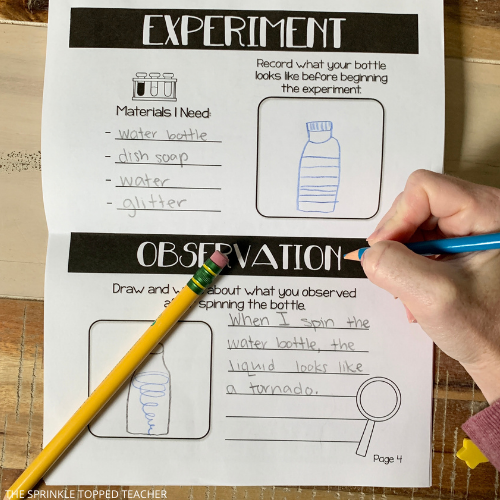
3. Fingerprint Science Experiment
In the Fingerprint Science Experiment, students will become detectives and investigate their fingerprints while learning about the scientific method! This STEM fingerprint science experiment will cover the three types of fingerprints and super fun facts about fingerprints in humans and animals.
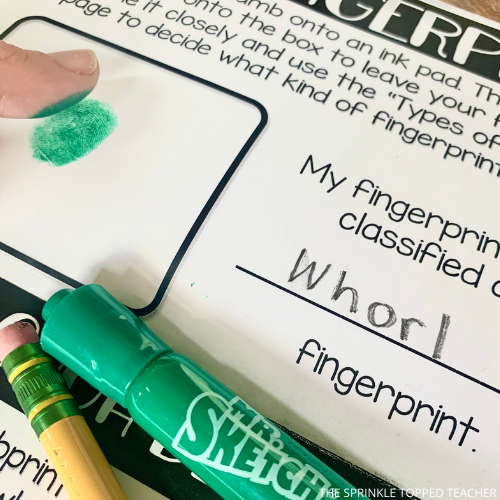
4. Marshmallow Toothpick Tower Science Experiment
The Marshmallow Toothpick Tower Science Experiment teaches students about building structures. They get to build their own masterpieces with marshmallows and toothpicks. As a bonus, this one ends in a tasty snack that students can enjoy!
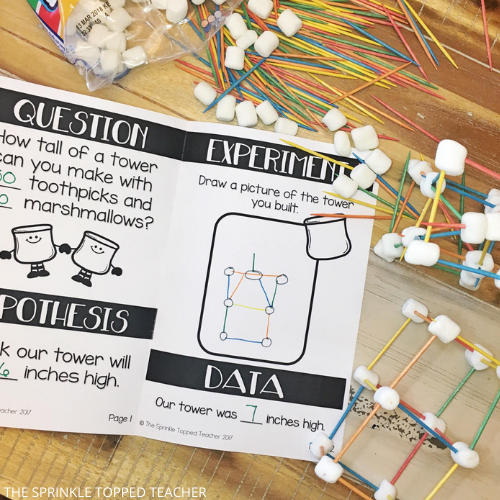
5. Coffee Filter Digital Science Experiment
Students will learn about pigment and chromatography through this engaging experiment. They will get to draw a picture on a coffee filter using markers and observe what happens when it is sprayed with water. This is a fantastic way to introduce students to the concept of chemistry!
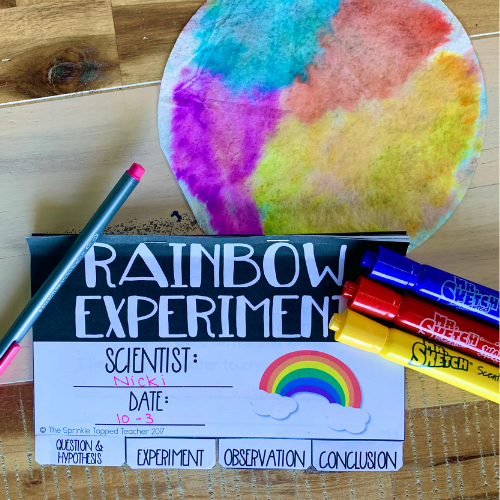
6. Slime Experiment
What kid doesn’t love slime?! This fun experiment lets them make their own with just a few household supplies. I love using this one during Halloween — it’s got the perfect spooky vibe!
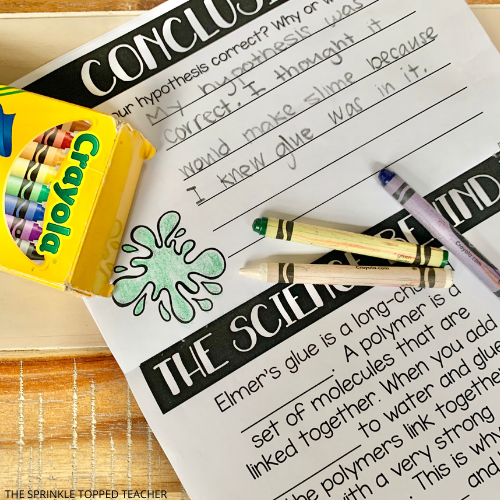
7. Clean a Dirty Penny Science Experiment
Students love to collect and bring in a dirty penny for this science experiment. Students discover which cleaning solution works best to clean it and why using the scientific method! All you need are pennies, water, dish soap, salt, and vinegar. It’s a great option for Presidents’ Day, too!
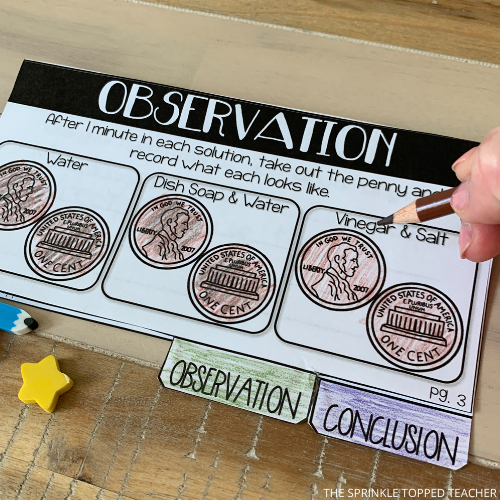
What’s included in each scientific method for kids experiment?
I recently edited this bundle of experiments to include a table of contents, digital versions on Google Slides, and some great teacher tips to help your experiments run smoothly and make life easier for you. Each experiment includes…
● Explanation of the experiment, great for parents to follow at home!
● Guiding Question and Hypothesis
● Experiment (Picture and written)
● Observations (Picture and written)
● Conclusion
● The science behind the experiment explained (includes fill in the blank option as well)
There you have it: everything you need to teach the scientific method to your students or a child at home!
Conclusion
Teaching the scientific method to kids doesn’t have to be complicated. It’s best to stick to 5 steps and use the same experimental format to keep science lessons cohesive. My 7 Easy Science Experiments to Teach the Scientific Method are an amazing option for anyone looking to introduce students to key STEM concepts!
How often do you experiment in your classroom? What’s your favorite experiment to do? I’d love to hear your thoughts!